By Andrea Gatti
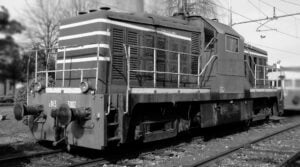
“D143 3021” photo by Ale316 from Italian Wikipedia. Licensed under CC BY-SA 3.0 via Wikimedia Commons
The locomotive you see in the photo is, in the State Railways classification, a D143. The D.143 are diesel-electric heavy shunting and locomotives, which served in the Italian State Railways, obtained from the mechanical and electrical reconstruction of the Ne 120. This locomotive was built in 1943 and registered in 1944 by the Military Railway Service as n° 1248, becoming 1200.026 for the FS in 1948 and Ne 120.026 in 1953. It took the serial number D143-3021 in 1971. Together with the D143-3019 (MRS 1243) it is part of the historic vehicle fleet of the FS Foundation. Another D143, 3045 (MRS 1242) is listed as a "cultural asset" by the BBCCAA Department of the Sicilian Region.
The Ne 120 locomotives were built by the American company Whitcomb Locomotive Works in different series from 1941 to 1945, after having been used on the networks of various countries in North Africa and the Middle East they arrived in Italy in 1944 with the Military Railway Service, the American equivalent of our Railway Engineers. The Ne 120 consisted of a two-bogie chassis on which two front bodies and a central driving cab were mounted. In structure they were similar to similar and widespread creations for other American railways. All around, a path equipped with handrails allowed passage laterally and around the foreparts directly from the driving cab. They were perfectly bidirectional. The two bogies, of a simplified type, had coil spring suspension. They were equipped with 2 diesel engines built by Buda, an Illinois company licensed by Lanova: they were 6-cylinder, with overhead valves, and supercharged. They were coupled to a dynamo generating direct current which powered the electric motors placed on the trolleys. The electrical part was made by Westinghouse.
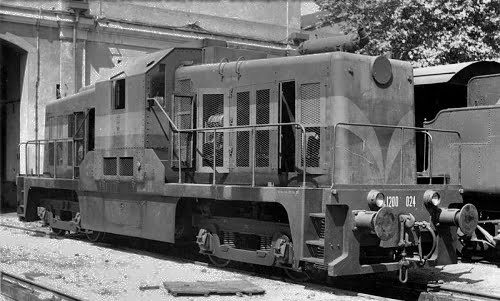
FS Ne 1200-024 locomotive in 1953 in plum livery with yellow band
Military Railway Service
From “On Point” Fall 2013 – Railroaders in Olive Drab [1] – Translation by Andrea Gatti Gotica Toscana npa
During the Second World War, the Military Railway Service operated in all operational theaters involving American units. At the height of its activities it was made up of eleven divisions, thirty-three operational battalions and eleven workshop battalions as well as engineering, communications and military police units supporting the railway workers.
The Allies' next move after the liberation of North Africa was the landing in Sicily: Operation Husky on the night between 9 and 10 July 1943. Three days later the 727th Railway Operating Battalion landed in Licata, immediately starting its work on the lines Sicilian. As Gen. Patton wrote, within four hours of the landing the battalion had organized the local workers, located the plants, put pressure on the machines and began reconnaissance of the lines. In the first 24 hours of operations the 727th had supplied the 3d Infantry Division with 400 T of material and in the following three days it reached 800 T per day. During the campaign in Sicily the 727th managed 2200 km of railway lines using 300 locomotives and 3500 railway wagons moving an average of 3400 T per day destined for the 7th Army.
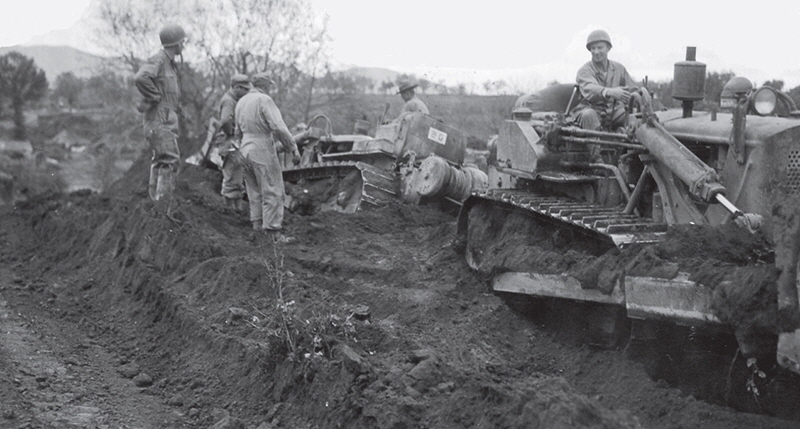
The men of the 719th Railway Operating Battalion working with bulldozers to repair a river crossing destroyed by the retreating Germans – 13 December 1943 (National Archives)
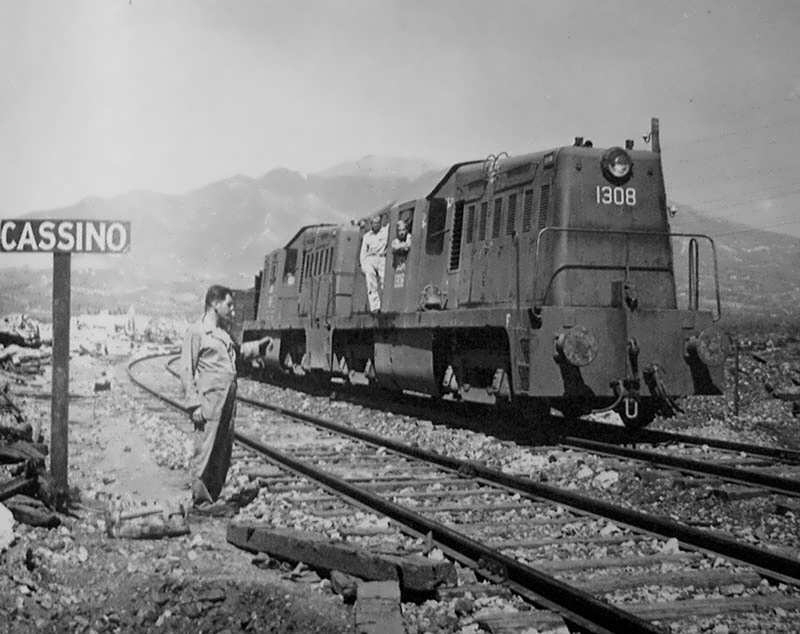
The Ne 120-1308 locomotive in double traction just outside Cassino – The original caption says “A load of coal pushed to Cassino, Italy, the first service on the Naples Rome line since the Allied occupation (7-20-44)
On 9 September 1943, with the landing in Salerno, the Allies carried out their first operation on the European continent. Faced with the strong resistance offered by the German troops, the Allies took a month to organize the forces destined for the offensive to capture the port of Naples. Three days after the Allies entered Naples, the advance unit of the 703rd Railway Grand Division (Atlantic Coast Railroad Company) reached the port to find that the combined action of Allied bombing and German demolitions had transformed the goods yard into a pile of ruins. Louis L. Russel, Technical Sergeant of the 713th Railway Operating Battalion describes it like this: Burnt and destroyed wagons scattered everywhere, sections of track uprooted and bent towards the sky in an indescribable chaos.
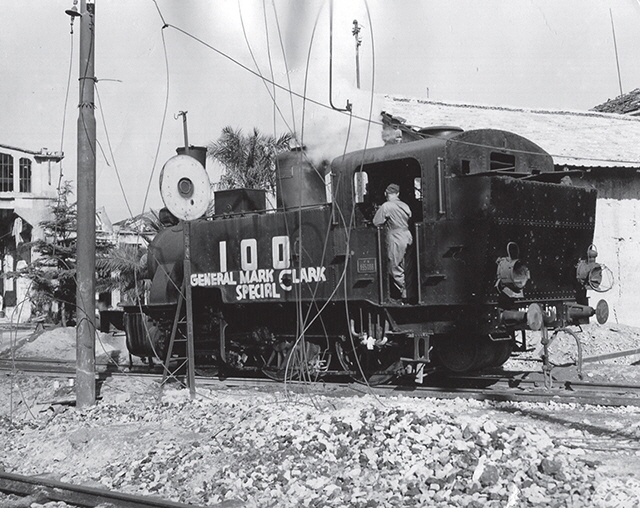
The Italian locomotives named “General Mark Clark Special”, in honor of the Fifth Army commander Lieutenant General Mark Clark, under pressure on the goods yard in Naples, 13 November 1943. The units of the Military Railway Service, in addition to the American vehicles, used all the vehicles premises capable of functioning. (National Archives)
The following day, upon further analysis, First Lieutenant R.H. Anderson, a yardmaster from Newton, Kansas, ruled, “we can get the first train out of here by Sunday.” With all the battalion personnel, including engineers, engineers and firefighters, busy clearing away the rubble, Anderson's prediction proved correct: on Saturday a test train consisting of an old Italian locomotive and five wagons moved 6km out of the yard. goods. Four days later, six trains capable of carrying 450T of cargo each began to leave the yard regularly. With the freight yard finally operational, Naples became the 5th Army's first supply port.
Bibliography
- On Point Fall 2013 – Railroaders in Olive Drab: The Military Railway Service in World War II by Lieutenant Colonel Clayton R. Newell, USA-Ret.
- AMERICAN “RAILS” IN EIGHT COUNTRIES – The Story of the 1st Military Railway Service by: Headquarters, Southern Lines of Communications – European Theater of Operations, US Army – February 1945.

